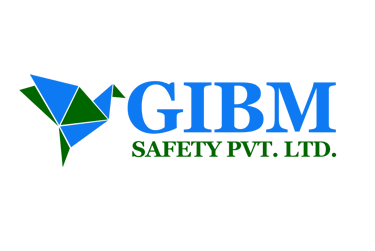Team Building Training: Fostering Collaboration and Driving Performance Excellence
In today's interconnected business environment, organizational success increasingly depends on the ability of teams to collaborate effectively, share knowledge, and work toward common objectives. Team building training has evolved from recreational corporate activities to strategic interventions that drive measurable improvements in productivity, innovation, and employee engagement. Research from TeamBuilding.com indicates that companies investing in structured team building programs achieve 25% higher productivity rates and 30% better employee retention compared to organizations that neglect team development initiatives.
BLOG
8/22/20216 min read


In today's interconnected business environment, organizational success increasingly depends on the ability of teams to collaborate effectively, share knowledge, and work toward common objectives. Team building training has evolved from recreational corporate activities to strategic interventions that drive measurable improvements in productivity, innovation, and employee engagement. Research from TeamBuilding.com indicates that companies investing in structured team building programs achieve 25% higher productivity rates and 30% better employee retention compared to organizations that neglect team development initiatives.
The modern workplace presents unique challenges that make effective team building more critical than ever. Remote work arrangements, cross-functional project structures, and rapid technological change require teams to develop new collaboration skills while maintaining high performance standards. Team building training provides the frameworks, skills, and practices necessary to navigate these challenges successfully.
The Strategic Value of Team Building Education
Contemporary team building training addresses fundamental organizational challenges that affect competitiveness, innovation capacity, and sustainable growth. According to Indeed Career Research, effective team building programs increase productivity by encouraging employees to work toward common objectives while reducing duplication of effort through improved communication and coordination.
Team building training goes beyond traditional trust exercises to develop practical collaboration skills, communication competencies, and conflict resolution capabilities that directly impact business outcomes. These programs help organizations build cohesive teams capable of tackling complex challenges, adapting to change, and achieving ambitious performance goals.
For mid-size companies, team building capabilities are particularly valuable because these organizations often require high levels of collaboration across functional boundaries. When teams work effectively together, mid-size companies can achieve the agility advantages of smaller organizations while accessing the capabilities typically associated with larger enterprises.
Core Components of Effective Team Building Programs
Modern team building training integrates multiple competencies that collectively enhance team performance and organizational effectiveness. Communication excellence forms the foundation, as research from Momentum Training Solutions demonstrates that effective communication reduces workplace conflict by 40% while improving project completion rates by 35%.
Trust building activities help team members develop confidence in each other's capabilities, intentions, and reliability. This trust foundation enables teams to take calculated risks, share innovative ideas, and support each other through challenging projects and organizational changes.
Conflict resolution skills enable teams to address disagreements constructively, transforming potential sources of dysfunction into opportunities for improved understanding and enhanced collaboration. These skills are essential for maintaining team effectiveness in high-pressure environments.
Goal alignment techniques help teams understand how individual contributions support collective objectives while ensuring that team activities remain focused on organizational priorities. This alignment is crucial for maintaining productivity and achieving strategic objectives.
Leadership Development Through Team Building
Team building training provides unique opportunities to identify and develop leadership potential within organizations. Through various activities and challenges, participants demonstrate leadership qualities, decision-making capabilities, and the ability to motivate and guide their colleagues.
According to Vantage Circle research, team building exercises reveal leadership characteristics that may not be apparent in traditional work environments, providing valuable insights for succession planning and leadership development initiatives.
These programs help existing leaders enhance their coaching skills, develop emotional intelligence, and learn how to create environments that foster collaboration and high performance. The leadership capabilities developed through team building training have direct applications in daily management activities and strategic initiatives.
Cross-Departmental Collaboration and Integration
One of the most significant benefits of team building training is improved interdepartmental collaboration and understanding. These programs help employees appreciate the contributions of colleagues from different functional areas while building relationships that facilitate ongoing collaboration.
Cross-functional team building activities create opportunities for employees to understand different perspectives, appreciate diverse skill sets, and develop networks that support future collaboration. This understanding reduces organizational silos while improving coordination across departments.
Research demonstrates that organizations with strong interdepartmental relationships achieve 20% faster project completion times and 25% better cross-functional problem-solving capabilities compared to those with poor internal collaboration.
Technology-Enhanced Team Building Methodologies
Modern team building training leverages technology to create engaging, measurable learning experiences that accommodate diverse learning styles and organizational requirements. Virtual team building platforms enable remote and hybrid teams to participate in collaborative activities that build relationships and develop teamwork skills.
According to Soren Kaplan research, technology-enhanced team building programs achieve 30% better engagement rates and 25% superior learning retention compared to traditional approaches. These technologies enable real-time feedback, progress tracking, and customized experiences that address specific team development needs.
Gamification elements, interactive simulations, and collaborative problem-solving platforms create immersive experiences that closely mirror workplace challenges while providing safe environments for experimentation and learning.
Industry-Specific Applications and Customization
Effective team building training recognizes that different industries present unique collaboration challenges and require customized approaches. Healthcare teams require training that addresses patient safety, regulatory compliance, and high-stakes decision-making under pressure.
Technology companies benefit from team building programs that address innovation processes, agile development methodologies, and cross-functional product development challenges. Manufacturing organizations need training that integrates safety considerations, quality management, and operational efficiency requirements.
For companies operating in diverse business environments like Goa, team building training must address cultural diversity, local business practices, and industry-specific collaboration requirements. Organizations such as GIBM Pvt. Ltd. in Panjim have developed customer-tailored team building programs that consider regional cultural contexts while delivering globally relevant teamwork capabilities.
Measuring Team Building Impact and ROI
Organizations investing in team building training must implement comprehensive measurement systems to track effectiveness and demonstrate return on investment. Quantitative metrics include productivity improvements, project completion rates, employee satisfaction scores, and turnover reduction.
According to Training Associates research, organizations with structured team building programs achieve 17% higher productivity rates and 21% better profitability compared to those without formal team development initiatives.
Qualitative measures, including team climate assessments, collaboration effectiveness evaluations, and innovation capacity indicators, provide insights into cultural and behavioral improvements resulting from team building investments.
Long-term measures, such as organizational agility, change readiness, and leadership pipeline strength, demonstrate how team building training contributes to sustainable competitive advantage development.
Virtual and Hybrid Team Building Strategies
The evolution toward remote and hybrid work arrangements has created new requirements for team building training that addresses virtual collaboration challenges. These programs teach teams how to build relationships, communicate effectively, and maintain cohesion across digital platforms.
Virtual team building training covers digital communication etiquette, online collaboration tools, and strategies for maintaining team culture in distributed work environments. These skills are essential for organizations seeking to maintain high performance while offering flexible work arrangements.
Building Sustainable Team Culture
The most successful organizations view team building training as an investment in sustainable culture development rather than one-time activities. This approach requires ongoing reinforcement, regular team development activities, and integration with performance management and career development systems.
Sustainable team building involves creating systems and processes that support continued collaboration, regular team assessment and improvement, and leadership behaviors that reinforce teamwork values throughout the organization.
Innovation and Creative Problem-Solving
Team building training increasingly incorporates innovation and creative problem-solving methodologies that enable teams to tackle complex challenges and identify breakthrough solutions. These capabilities are essential for organizations seeking competitive advantage through innovation.
Creative collaboration techniques help teams leverage diverse perspectives, generate innovative ideas, and implement creative solutions to business challenges. These skills support both incremental improvement initiatives and transformational innovation projects.
Implementation Best Practices and Success Factors
Successful team building training implementation requires careful planning, appropriate resource allocation, and ongoing support from organizational leadership. Programs should be designed to address specific team development needs while aligning with broader organizational objectives.
Effective implementation combines formal training activities with practical application opportunities, ongoing coaching support, and regular assessment of team development progress. Integration with other learning and development initiatives maximizes impact while creating synergies across capability development programs.
Future Trends and Emerging Practices
The future of team building training will continue evolving in response to changing work environments and technological advancement. Artificial intelligence, predictive analytics, and real-time collaboration tools are becoming integral components of advanced team building programs.
Neuroscience insights, behavioral psychology research, and data-driven team optimization approaches represent emerging areas that will enhance the effectiveness of team building interventions while providing deeper insights into team dynamics and performance factors.
Building Organizational Team Capability
Organizations seeking maximum return from team building investments should develop internal capabilities that support ongoing team development. This includes training managers in team building techniques, establishing communities of practice, and creating systems that support continuous team improvement.
Internal team building capability development reduces dependence on external providers while creating sustainable systems for ongoing team development and performance enhancement.
Conclusion
Team building training represents a strategic investment in organizational capability that delivers measurable returns through improved collaboration, enhanced productivity, and better business outcomes. As work becomes increasingly complex and interdependent, the ability to build and maintain high-performing teams becomes a critical competitive advantage.
Organizations that prioritize comprehensive team building education position themselves for sustained success while creating cultures that attract and retain top talent. The evidence clearly demonstrates that team building training is not just beneficial but essential for achieving organizational excellence in today's collaborative business environment.
" Building Industry Excellence. "
Contact Us
helpdesk@gibmsafety.com
+91 9136088864
© 2025. All rights reserved.


helpdesk@rfiresafety.com
Conversation
